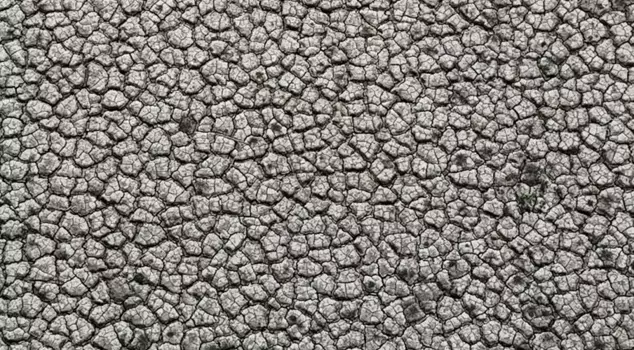
22.10.2025 11:41
In Adana, Turkey's agricultural center, the drought resulting from decreasing rainfall in the Seyhan Dam Lake has come to light. While the water level of the dam continues to drop, the cracked soil is a clear indication that the drought has reached serious dimensions.
Due to insufficient rainfall, the water level in Seyhan Dam Lake is raising alarms. Along with Adana, drought has intensified in many cities such as Konya, Bursa, Şanlıurfa, Mardin, and Manisa.
DEEP CRACKS HAVE FORMED
In Adana, the water level in Seyhan Dam Lake has rapidly decreased due to almost no rainfall during the summer and autumn months. Deep cracks, which are signs of drought, have begun to form in the areas where the water has receded around the lake.
FORECAST FROM SOUTH KOREA IS COMING TRUE
A study conducted by Pusan National University in South Korea predicted that drinking water sources could drop to critical levels by 2030. This prediction has visibly started to come true, especially in Adana in recent months.
"IF IT DOESN'T RAIN, A FAMINE WILL OCCUR"
Sedef Yıldırım, a resident of Dörtler Neighborhood by the Seyhan Dam Lake, stated that the drought has now reached a dangerous level:
"It hasn't rained at all during this time. It rained a little the other day, but it was insufficient. The water in the dam lake has receded significantly. Water used to come up to the front of the village, but now it’s gone. If it doesn't rain, a famine will occur."
Another neighborhood resident, Adem Önder, noted that the lake hasn't filled for years:
"It hasn't rained enough for a few years. Therefore, the lake area has emptied. I used to fish in my youth, I would hunt around here. It's been like this for about 5 years. The lake bed is covered with weeds. If this continues, Adana may run out of water. Agricultural costs are already high, and with the drought, we are struggling even more."
THE SITUATION IS SEVERE IN OTHER CITIES OF TURKEY AS WELL
The situation in Adana is not alone. In recent years, while groundwater levels have dropped in the Konya Plain, Şanlıurfa, Mardin, Manisa, Gaziantep, Nevşehir, Bursa, and around Ankara, the filling rates in dams and ponds have fallen to critical levels.
Experts state that changes in rainfall patterns, especially in Central Anatolia and Southeastern Anatolia regions, threaten agricultural production. Meteorological data shows that the summer of 2024 has been recorded as one of the driest periods in the last 30 years across Turkey.
EXPERTS WARN: IRRIGATION POLICIES MUST BE REASSESSED
Agricultural and water policy experts emphasize that water-saving irrigation methods should be promoted in cities where water levels in dams are rapidly decreasing. According to experts, if rainwater harvesting and groundwater management are not urgently replanned in many regions of Turkey, both drinking water and agricultural water crises may occur within the next few years.